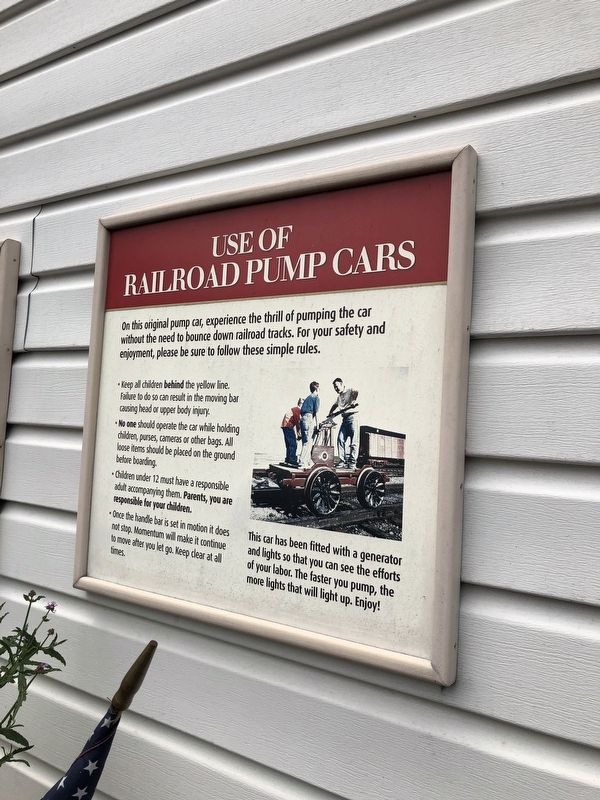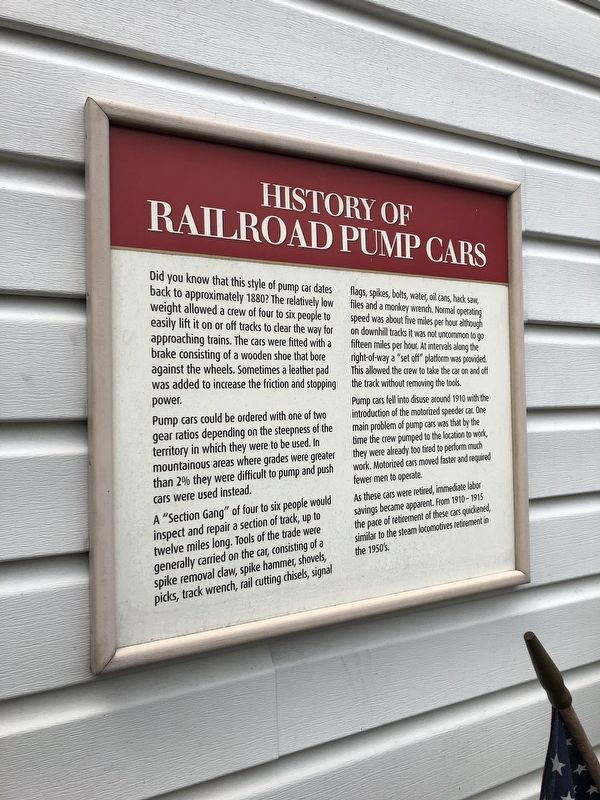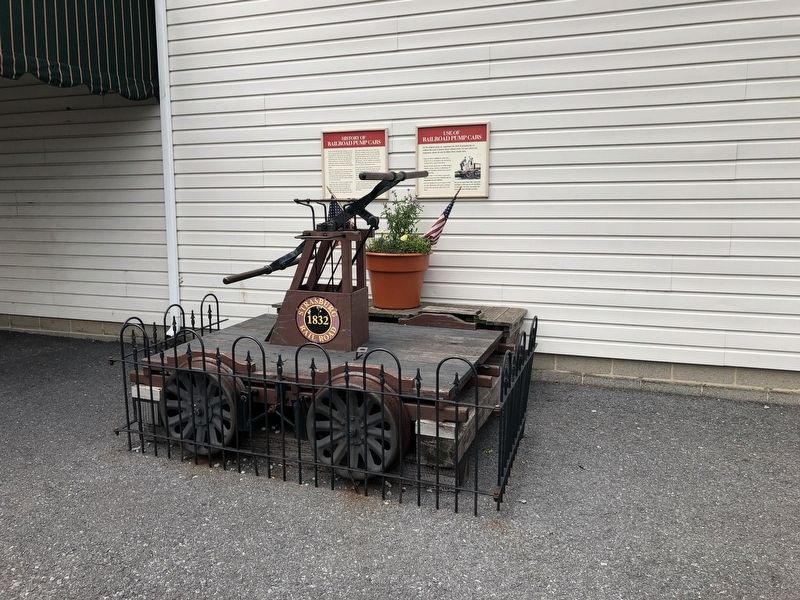Strasburg Township near Ronks in Lancaster County, Pennsylvania — The American Northeast (Mid-Atlantic)
History of Railroad Pump Cars
Did you know that this style of pump car dates back to approximately 1880? The relatively low weight allowed a crew of four to six people to easily lift it on or off tracks to clear the way for approaching trains. The cars were fitted with a brake consisting of a wooden shoe that bore against the wheels. Sometimes a leather pad was added to increase the friction and stopping power.
Pump cars could be ordered with one of two gear ratios depending on the steepness of the territory in which they were to be used. In mountainous areas where grades were greater than 2% they were difficult to pump and push cars were used instead.
A "Section Gang" of four to six people would inspect and repair a section of track, up to twelve miles long. Tools of the trade were generally carried on the car, consisting of a spike removal claw, spike hammer, shovels, picks, track wrench, rail cutting chisels, signal flags, spikes, bolts, water, oil cans, hack saw, files and a monkey wrench. Normal operating speed was about five miles per hour although on downhill tracks it was not uncommon to go fifteen miles per hour. At intervals along the right-of-way a "set off" platform was provided. This allowed the crew to take the car on and off the track without removing the tools.
Pump cars fell into disuse around 1910 with the introduction of the motorized speeder car. One main problem of pump cars was that by the time the crew pumped to the location to work, they were already too tired to perform much work. Motorized cars moved faster and required fewer men to operate.
As these cars were retired, immediate labor savings became apparent. From 1910 - 1915 the pace of retirement of these cars quickened, similar to the steam locomotives retirement in the 1950's.
Topics. This historical marker is listed in this topic list: Railroads & Streetcars. A significant historical year for this entry is 1910.
Location. 39° 58.996′ N, 76° 9.533′ W. Marker is near Ronks, Pennsylvania, in Lancaster County. It is in Strasburg Township. Marker is on Gap Road east of Bishop Road, on the left when traveling east. Touch for map. Marker is at or near this postal address: 327 Gap Road, Ronks PA 17572, United States of America. Touch for directions.
Other nearby markers. At least 8 other markers are within 3 miles of this marker, measured as the crow flies. Strasburg Rail Road (about 600 feet away, measured in a direct line); Reading Observation No. 1 (approx. 0.2 miles away); 37 East Main Street (approx. 0.9 miles away); 33 East Main Street (approx. 0.9 miles away); Original Head Race & Water Turbine (approx. 1.8 miles away); Soudersburg Methodist Church (approx. 2.2 miles away); Leaman Place (approx. 2.6 miles away); First Settlement (approx. 2.9 miles away). Touch for a list and map of all markers in Ronks.

Photographed By Devry Becker Jones (CC0), July 7, 2019
3. Instructional plaque to the right of the marker
Credits. This page was last revised on February 7, 2023. It was originally submitted on July 10, 2019, by Devry Becker Jones of Washington, District of Columbia. This page has been viewed 264 times since then and 26 times this year. Photos: 1, 2, 3. submitted on July 10, 2019, by Devry Becker Jones of Washington, District of Columbia.

